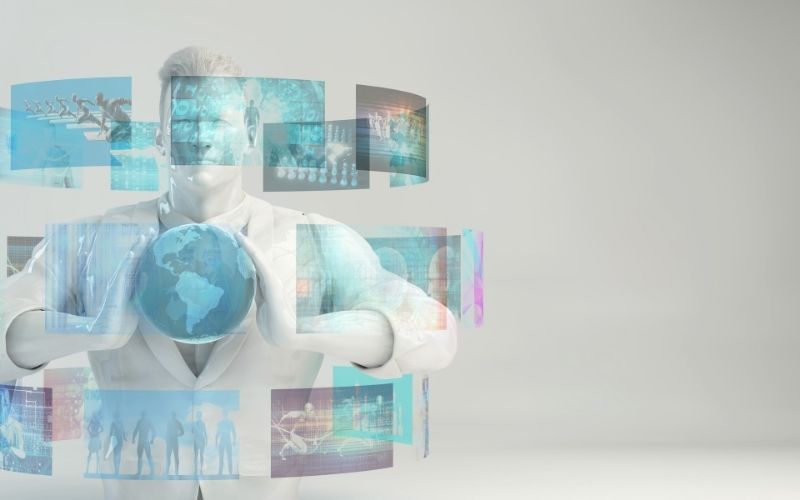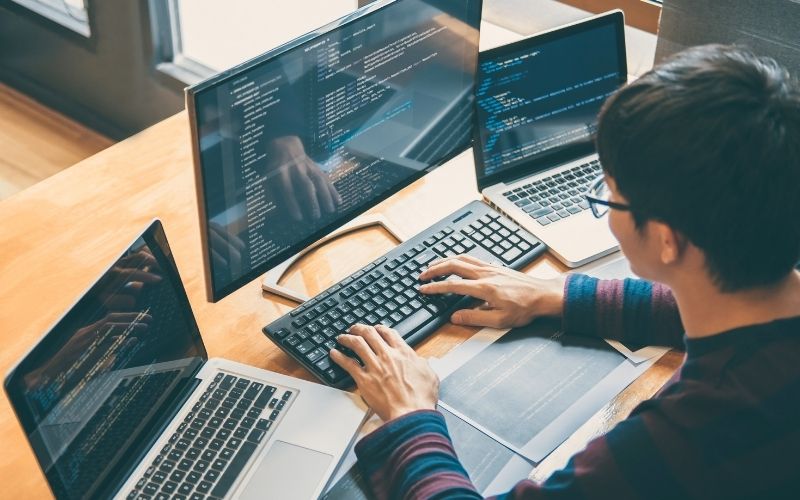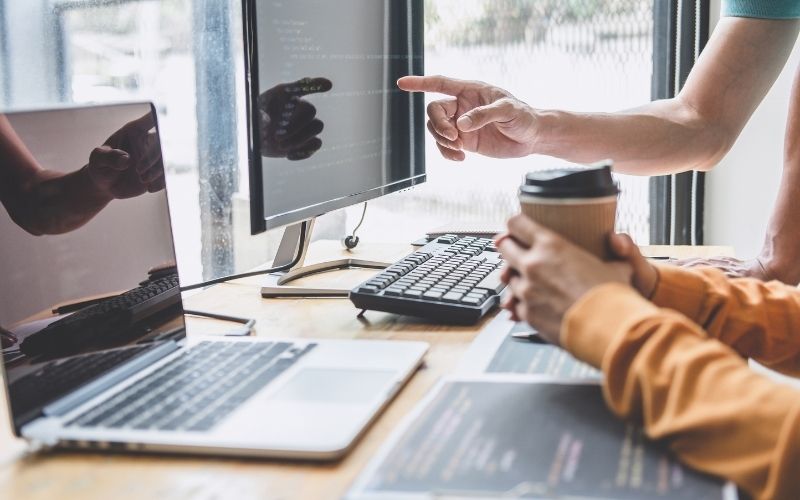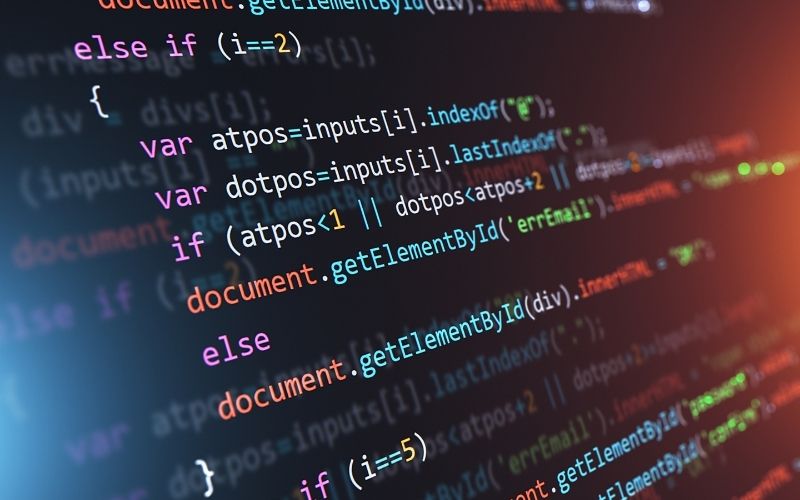Intoday’s digital world, most people have definitely experienced using a computeror a smartphone; however, not all of them know how the communication between themand the system takes place or how system hardware understands the instructions givento it.
Theanswer is the operating system. Every modern device, whether it's a desktopcomputer or laptop, a smartphone, tablet, smart watch or a video game system, hasan operating system which acts as a link between the user and the systemhardware.
Programmersusually have a doubt regarding the best OS for programming and in order tofigure out the most suitable operating system, they take several factors intoconsideration including operating system functions and features.
So,if you are a programmer, you have to know what OS is, what types of operatingsystems are there and the main operating system functions.
What is an operating system?

GeneralMotors created the first OS in 1956 and later in the 1960s, IBM started to manufactureand distribute operating systems.
Anoperating system is the most important software in every interactive smartdevice and is responsible for managing memory and processes, as well as allother software and hardware.
OSbasically translates the instructions given by the user to machine language so thecomputer can understand it. In this way, the OS allows users to communicatewith the computer without knowing its language.
Inother words, it acts as an intermediary between the user and computer hardwareand provides an environment required to execute different programs efficiently.
Typesof Operating Systems

Operatingsystems have kept evolving since they first appeared. Let’s review some of the bestOS for programming that programmers use today.
Realtime Operating System
MultiprogrammingOperating System
BatchOperating System
TimeSharing Operating System
DistributedOperating System
InReal time Operating Systems, the time interval required to process the inputand respond to it is quite small and that’s why they are used when there are verystrict time requirements.
Examplesof Real time operating systems are air traffic control systems, missilesystems, weapons and industrial control systems.
MultiprogrammingOperating Systems are at times referred to as multitasking operating systems.This kind of OS makes possible to hold data from two or more processes in theprimary memory at any given moment, i.e. they can run simultaneously.
Somecomputer processes are very extended and time-consuming and programmers needthem to execute faster. In batch OS, when user arrange the job and after thatsubmits it to a computer operator, the jobs are become grouped according totheir computing requirements and get executed in batches. This feature is veryuseful and speeds up the process.
However, in these types of operatingsystems, there is no interaction between the user and the device, and inaddition giving priority to different tasks based on their level of urgency canbe difficult.
Although similar to Multiprogramming batch systems, these operating systems have one difference which makes them unique. They are designed to accommodate multiple users; in other words, they enable multiple users to use the same computer resources.
Distributed operating systems use processors that belong to different machines and make them function as one single computer which allows them to provide very fast computation.
Examples of operatingsystems

Nowadays a programmer can choose from different operating systems. Tech companies havemade different types of operating systems with different features. Differentoperating system functions are intended to meet varying customer demands and someof them have become more popular among users.
TheseOSs take different approaches to performing tasks and the programmer mustunderstand the different processing and interaction elements of each one.
Below,we are going to introduce some of the most known computer and smartphoneoperating systems in the world.
MicrosoftWindows
Asthe most popular and widely used operating system, Microsoft Windows was firstreleased in 1985 and is preloaded on most new PC hardware. Microsoft Windows isone of the best OS for programming since it’s compatible with different kindsof software and continues to improve users’ experience with updates and newreleases.
🔘 Read More: App Design Ideas: 13 Creative Ways to Improve Your App
AppleiOS
Apple'siOS is a closed and dedicated mobile operating system that runs on Applehardware, such as iPhones, iPad tablets and iPod Touch media players.
significantfeatures of iOS include the App Store where users can buy different apps ordownload free software, highly focus on security, and a simple, streamlinedinterface with minimal hardware buttons.
Linux
This operating system was created by Finnish programmer Linus Torvalds in 1991 and unlike many other types of operating systems, it’s free and available in many different open-source versions.
Linux offers a variety of options and is an ideal choice for those who know how to customize and work with operating systems. Linux can be run on a vast variety of hardware and is widely used on corporate and scientific servers.
Android OS
Based on the number of devices installed, it seems that Android is the most popular operating system in the world. This OS is mostly used on smartphones and tablets and its biggest difference with iOS is that it can be used on devices made by a variety of different manufacturers.
Apple mac OS
mac OS runs on Apple laptops and desktops and offers user-friendly features such as Siri and FaceTime. macOS is partly based on the historic family of Unix operating systems and shares some features with other Unix-related operating systems including Linux.
Functions of and Operating System
An Operating System acts as a bridge between the user and system hardware thatlets them communicate and has many functions. Following are the main operatingsystem functions.
Process management
In the computer system, a process is an instance of a computer program which isbeing executed at the moment. Process management is one of the most importantfunctions of the OS and includes the following activities:
· Keeping track of processor and status of process.
· Allocating the processor (CPU) to a process.
· De-allocating processor when a process is no longer needed.
File Management
A file is a collection of related information which can be an image, video or a text file. For efficient and easy navigation or usage, a file system is organized into directories which sometimes contain other files and directories.
File management one of the basic operating system functions and includes different activities such as:
· Keeping track of information, location, uses, status etc. which are together known as the file system.
· Allocating and deallocating resources.
Memory Management
In all types of operating systems, the Primary Memory or Main Memory management isone of the most important functions. For example, it keeps track of each and every memory location, checks how much memory is to be allocated to processes,and decides which processes are to be loaded into memory when memory space becomes available.
Device Management
An OS performs different activities for device management, including keeping track of connected devices, designating a program responsible for every device, determining access and its duration to a certain device and allocating devices in an efficient way.
Advantages of Operating Systems

An operating system can be considered the heart of any computer that controls the functions of computer architecture, including hardware, peripheral devices, and any other existing component. Each type of operating system has its own benefits and downsides. However, the best OS for programming provides these advantages for the user:
· Resource Sharing: operating systems allow you to share resources and apps with other users.
· Security: OS is responsible for the security of every data present inside it and does it by encrypting data bit by bit.
· User Friendly: compared to a command line interface, GUI provides a much more user-friendly interface equipped with various graphic al representations like symbols, buttons, menus, etc. that enable the users to interact and communicate with the machine much more easily.
· Multitasking: OS enables the programmer or user to perform separate tasks at the same time without the need to close one window in order to open another.
· Hardware Accessibility: Graphical UI allows users to access hardware functionality instantly without the need to write lines of codes for accessing hardware.
Conclusion
In the era of digitalization, almost everyone around the world uses some sort of electronic device, such as a PC, smartphone, laptop or tablet on a daily basis. These devices all have one thing in common that enables them to function: operating systems.
In simple terms, the OS is an interface and link between the user and the machine that is loaded into the computer to manage all the programs.
The differences between different operating system types are not absolute and they all have common functions and characteristics. However, every programmer should have a complete understanding of the basics of operating systems and operating system functions, especially when it comes to mobile app development.
If you have any other questions about types of operating systems or best OS for programming, please let us know.